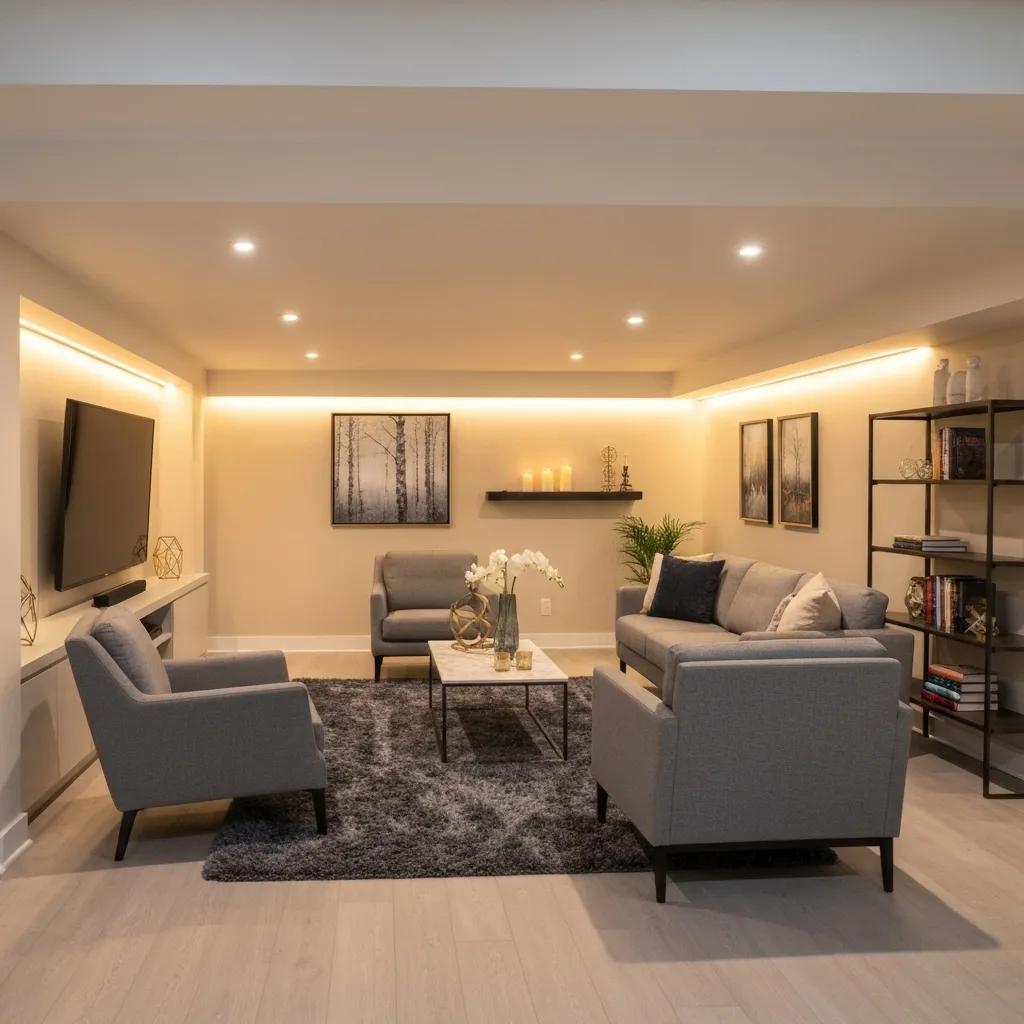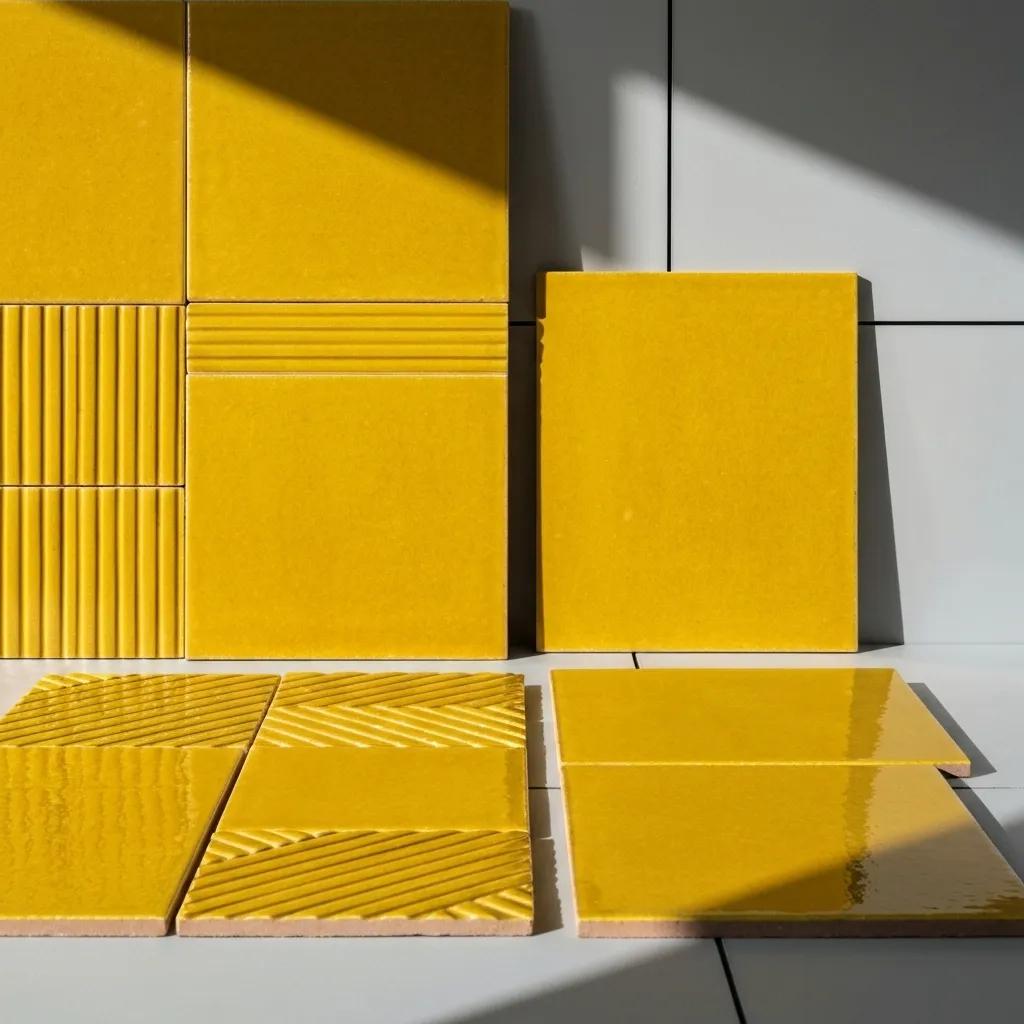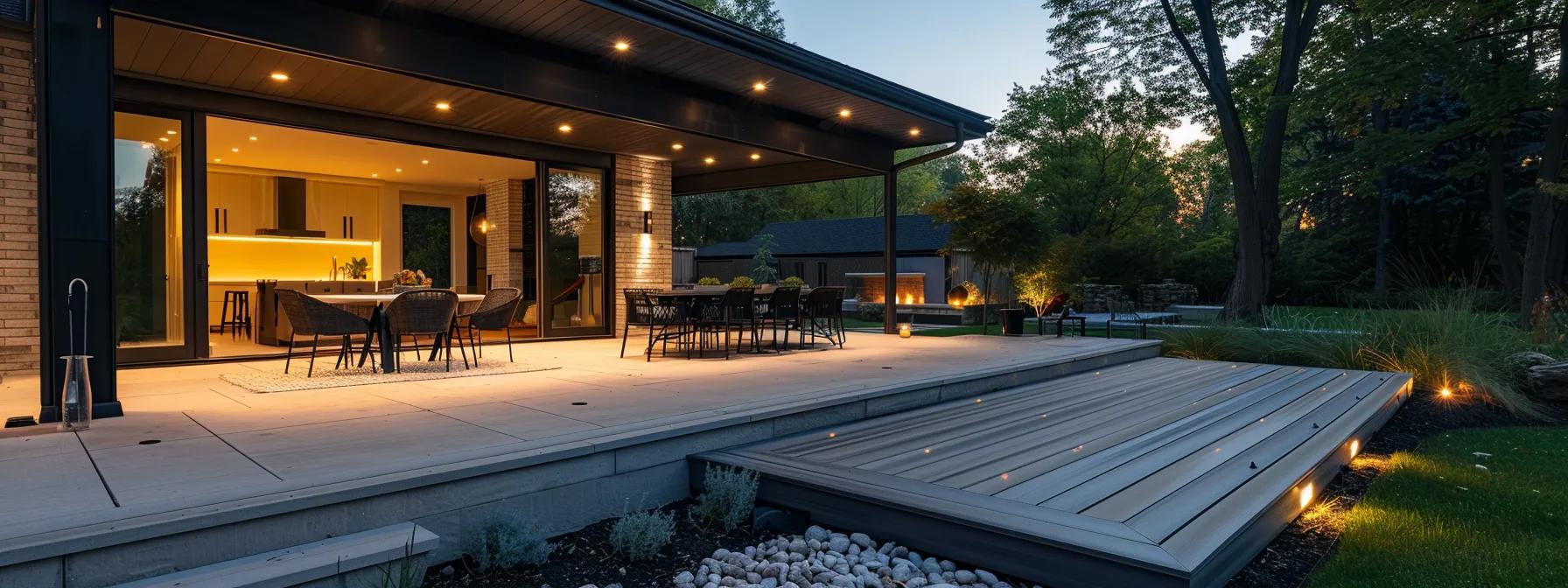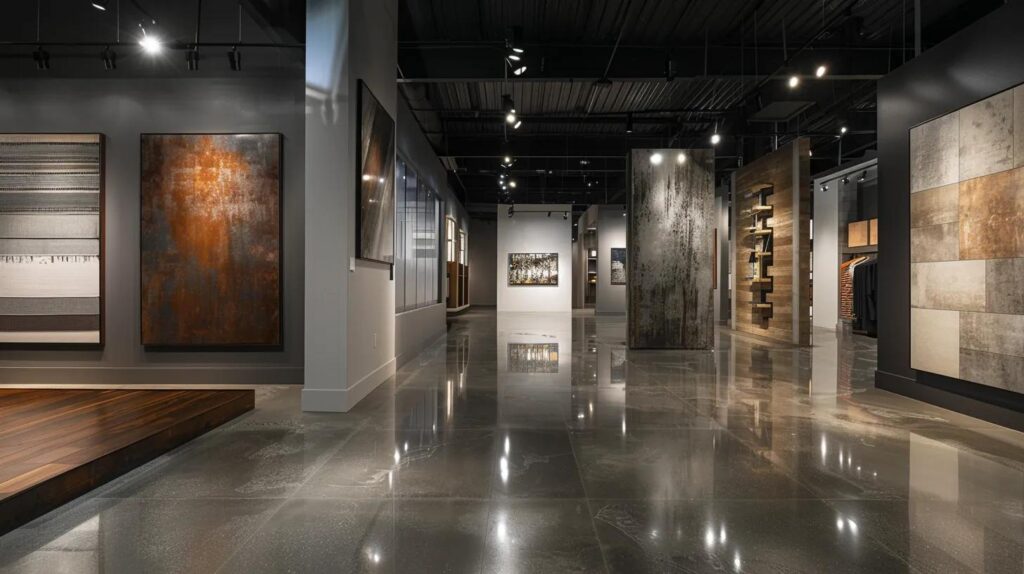
Affordable vs Premium Basement Finishing: What to Choose?
Basement finishing transforms an unused area into a functional living space. In fact, basement finishing des moines has become a favored approach for homeowners looking to add character to their homes. Homeowners in Des Moines, Iowa, and nearby areas often face the choice between affordable and premium options. This article explains what basement finishing involves, the benefits of each solution, and provides advice for choosing the best option based on budget, materials, and outcomes.
Key Takeaways
- Basement finishing increases your home’s value and usable space.
- Affordable options use cost-effective materials and DIY methods; premium finishing uses high-end materials and skilled craftsmanship.
- The choice depends on your budget, desired return on investment, and long-term goals.
- Both methods require adherence to local regulations and proper planning.
What Is Basement Finishing and Why Does It Matter?
Basement finishing converts an unfinished basement into a livable space. This may include installing walls, ceilings, flooring, lighting, and even a bathroom or kitchenette. Finishing the basement not only increases your home’s usable square footage but also boosts its resale value. Additionally, it improves .
What Does Basement Finishing Include?
The process typically covers insulation, drywall, ceiling and floor treatments (such as carpet or tile), and proper lighting. Homeowners may also add moisture-resistant materials, accent walls, or custom storage solutions to prevent dampness and improve ventilation.
How Does Basement Finishing Increase Home Value and Functionality?
A finished basement can boost a home’s value by 10–15% or more by providing extra living space for an entertainment room, office, or guest suite. Enhanced energy efficiency, soundproofing, and temperature control further increase both comfort and marketability.
Who Should Consider Basement Finishing?
This option is ideal for those seeking to maximize space for family use, rental income, or additional living areas without major exterior renovations. It is especially beneficial in colder climates where interior space is highly valued. basement finishing options.
What Are the Key Differences Between Affordable and Premium Basement Finishing?
The decision between affordable and premium finishes centers on cost, material quality, design complexity, and durability.
How Do Costs Compare Between Affordable and Premium Finishing?
Affordable basement finishing emphasizes simpler designs and economical materials with potential DIY work to save on labor. In contrast, premium finishing uses high-end materials like natural stone, custom cabinetry, and designer lighting, along with professional construction methods, which make it more expensive but offer extended warranties and superior quality.
What Materials Are Used in Affordable vs Premium Finishing?
Affordable finishes typically use standard drywall, laminate flooring, and budget-friendly cabinetry. Premium projects use luxury items such as hardwood floors, imported tiles, quality insulation, and designer fixtures, chosen for their performance and visual appeal.
How Do Design and Features Vary Between Affordable and Premium Options?
Affordable designs focus on functionality with simple color schemes and fixtures. Premium designs offer bespoke elements with integrated smart systems, creative lighting, and tailored aesthetics to create a luxurious ambiance similar to that found in upscale homes.
What Are the Differences in Craftsmanship and Warranty?
Affordable projects typically use standard construction methods and offer basic warranties. Premium projects are handled by experienced contractors with meticulous attention to detail, ensuring higher quality, extended warranties, and better post-installation support.
How Much Does Affordable Basement Finishing Cost and What Are Budget-Friendly Options?
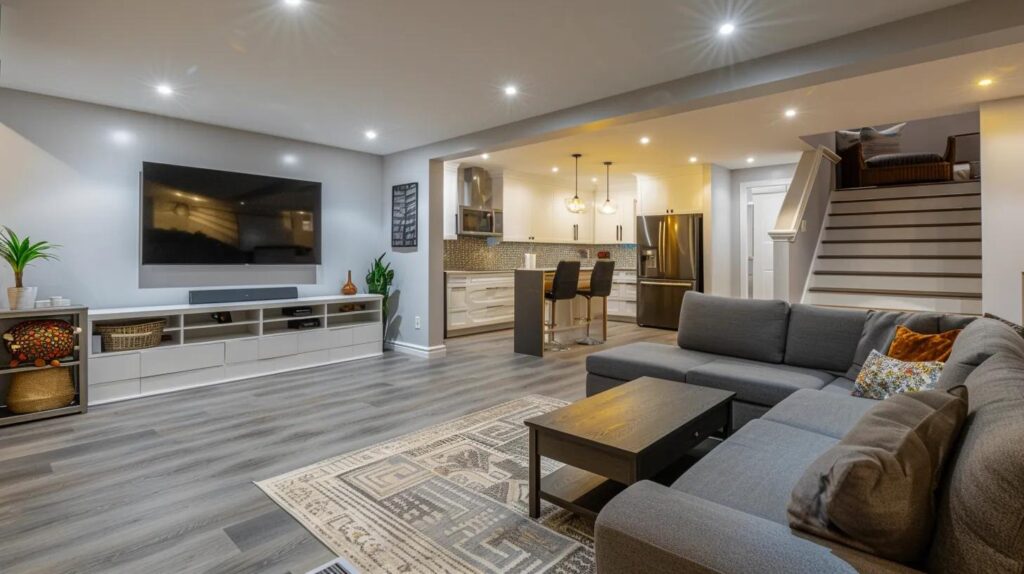
Affordable basement finishing provides a cost-effective solution, often delivering significant returns on a limited budget.
What Is the Typical Cost Range for Affordable Basement Finishing?
Depending on the basement size and design, affordable finishing can range from a few thousand dollars to about $15,000. This cost typically covers basic materials, standard lighting, insulation, and simple flooring.
Which Materials Are Best for Budget Basement Finishing?
Budget-friendly options include economical drywall, carpet, laminate flooring, and pre-fabricated cabinetry. Using moisture-resistant paint and cost-effective insulation helps maintain comfort while controlling costs.
Can You DIY Affordable Basement Finishing or Should You Hire Professionals?
Many affordable projects can be approached as DIY efforts, especially if you have some renovation experience. However, tasks like electrical work, plumbing, and major structural changes should be handled by professionals to ensure safety and compliance.
What Are Cost-Saving Tips for Affordable Basement Finishing?
Saving strategies include reusing existing materials, choosing off-the-shelf fixtures, and doing some work yourself. Planning well and purchasing discount building materials can help keep costs down and avoid unexpected expenses.
What Are the Benefits and Features of Premium Basement Finishing?
Premium basement finishing transforms the space into a high-end living area that rivals upscale homes and offers personalized design and superior materials. basement finishing project.
What Luxury Design Ideas Are Popular in Premium Basements?
Popular ideas include home theaters, spa bathrooms, wine cellars, and advanced smart-home systems. Custom lighting, intricate moldings, marble countertops, and hardwood flooring add a touch of elegance and sophistication.
Which High-End Materials Are Used in Premium Finishing?
Premium projects often incorporate solid hardwood, engineered stone, glass tiles, and top-grade insulation systems. Custom cabinetry and designer fixtures are also frequently used to elevate the space.
How Does Premium Finishing Improve Home Comfort and Aesthetics?
High-end finishes include advanced thermal insulation, soundproof windows, and custom layouts that enhance comfort. Enhanced lighting and climate control systems create a warm, inviting atmosphere while significantly improving the home’s market appeal.
What Financing Options Are Available for Premium Basement Projects?
Financing for premium finishing can include home renovation loans, personal loans, or lines of credit tailored for home improvements. Many contractors also offer financing plans to help spread out the cost of luxury enhancements.
How to Choose Between Affordable and Premium Basement Finishing?
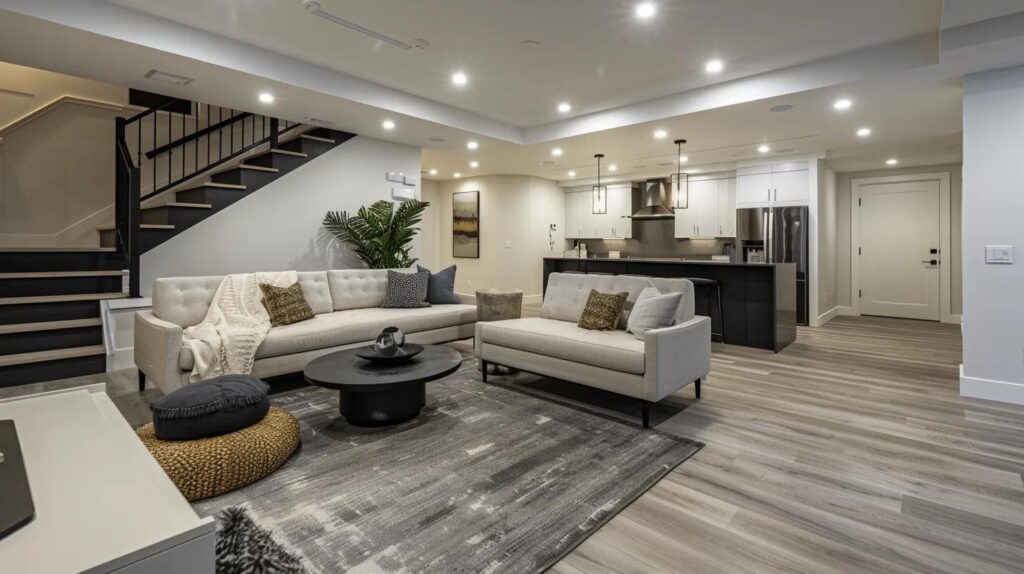
The right choice depends on your current needs, future plans, and budget.
What Factors Should Influence Your Basement Finishing Choice?
Consider your budget, intended use, expected return on investment, and overall design vision. Determine if the space will serve daily needs or function as a guest suite, studio, or recreation area, and factor in local market trends and resale potential.
How Does Expected ROI Affect Your Decision?
Affordable finishing usually offers a quicker payback through increased market value, while premium finishing provides long-term gains but may take longer to recoup the investment. Evaluate local real estate trends and your long-term plans to decide which option is more beneficial.
When Is Affordable Finishing the Right Choice?
If your primary goal is to add functional, livable space on a tight budget, affordable finishing is the best option. It works well for immediate occupancy and for homeowners planning to relocate within a few years.
When Should You Invest in Premium Finishing?
Opt for premium finishing when you plan to stay long term and wish to enjoy superior aesthetics, comfort, and market appeal. Investing more upfront can pay off with higher resale values and lasting quality.
What Is the Basement Finishing Process for Both Affordable and Premium Options?
Whether affordable or premium, basement finishing follows a similar process that varies mainly in material quality and design complexity. Basement finishing options can influence the final outcome of your project.
What Are the Typical Steps in Basement Finishing?
The process starts with a space assessment (including moisture testing and structural analysis), followed by design planning, permit acquisition, and budgeting. Construction steps include framing, insulation, drywall installation, and flooring, ending with electrical work, painting, and fixture installation. This structured process ensures compliance with building codes and homeowner expectations.
How Long Does Basement Finishing Take?
The timeline depends on project complexity. Affordable projects typically take 4 to 8 weeks, while premium projects may last 8 to 12 weeks due to customizations and higher quality installations.
What Permits and Regulations Should You Know?
Basement finishing must comply with local building codes and zoning regulations. Permits are required for structural changes, electrical, and plumbing work. It is advisable to consult local authorities or a basement finishing contractor to secure all necessary permits and schedule inspections.
What Are the Most Frequently Asked Questions About Affordable vs Premium Basement Finishing?
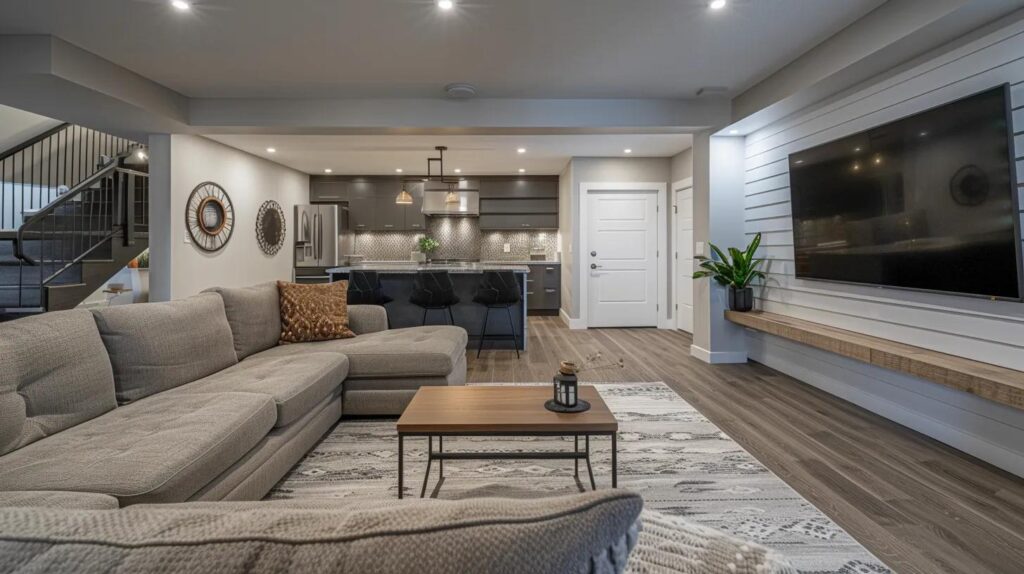
Below are common questions homeowners ask about basement finishing.
How Much Does It Cost to Finish a Basement?
Costs vary by design, materials, and size—affordable projects range from a few thousand dollars to about $15,000, while premium projects may exceed $30,000.
What Are the Best Materials for Basement Finishing?
Affordable options include standard drywall, laminate flooring, and budget cabinetry. Premium options feature hardwood, designer tiles, and custom installations.
How Long Does Basement Finishing Take?
Typically, affordable finishing takes 4–8 weeks while premium finishes take 8–12 weeks due to added complexity.
Can Basement Finishing Increase My Home’s Value?
Yes, a finished basement can boost home value by 10–15% or more, making it a wise investment for future resale.
Are There Financing Options for Basement Finishing?
Financing is available through home improvement loans, personal loans, and contractor-provided plans.
| Aspect | Affordable Finishing | Premium Finishing |
|---|---|---|
| Cost Range | $5,000 – $15,000 | $20,000 – $50,000+ |
| Materials | Standard drywall, laminate, budget fixtures | Hardwood, designer tiles, custom cabinetry |
| Design Complexity | Simple layouts, functional designs | Bespoke layouts, luxury design elements |
| Warranty and Craftsmanship | Basic warranty, standard contractor skills | Extended warranties, expert craftsmanship |
| ROI | Quick boost, lower initial investment | Higher long-term gains, premium market appeal |
A comparative table clarifies differences between affordable and premium basement finishing, helping you decide based on cost, material quality, and expected returns.
Final Thoughts
Basement finishing can transform your home by adding valuable living space and boosting overall property value. Weigh the practical, cost-effective benefits of affordable finishing against the superior aesthetics and longevity of premium finishing. Regardless of your choice, quality workmanship and compliance with local regulations are essential for a successful project.
Frequently Asked Questions
Q: What factors determine the overall cost of basement finishing? A: The cost is influenced by the basement’s size, material quality, design intricacy, and labor requirements.
Q: Can I complete basement finishing myself to reduce costs? A: DIY is possible for some tasks, but specialized work such as electrical, plumbing, or major structural changes should be performed by professionals.
Q: How does basement finishing impact energy efficiency? A: Quality insulation and materials improve energy efficiency, reducing heating and cooling costs.
Q: Will finished basements increase my home’s resale value? A: Yes, a well-finished basement can boost resale value by adding usable square footage and modern amenities.
Q: Are there any financing options available for these renovations? A: Homeowners can use renovation loans, personal loans, or contractor financing to spread the cost of basement finishing.

